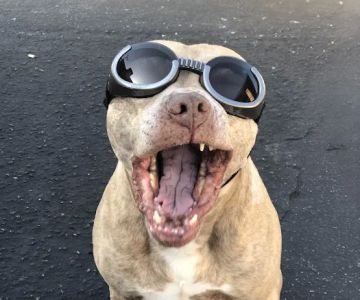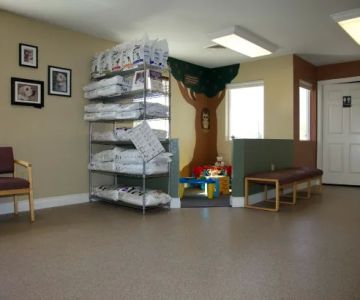- 1-Understanding-Apartment-Living-For-Dogs
- 2-Key-Characteristics-Of-Apartment-Friendly-Breeds
- 3-Top-Dog-Breeds-Suited-For-Apartments
- 4-Real-Life-Experiences-With-Apartment-Dogs
- 5-Tips-For-Successful-Apartment-Dog-Living
1. Understanding Apartment Living for Dogs
Living in an apartment presents unique challenges and opportunities for dog owners. Space constraints, noise considerations, and limited access to outdoor areas mean that not every dog breed is well-suited to this lifestyle. When choosing the best dog breeds for apartment living, it’s essential to consider both the dog’s physical needs and temperament.
Dogs in apartments benefit from breeds that adapt well to smaller spaces, have moderate exercise requirements, and can cope with the sounds and routines typical of multi-unit housing. Beyond size alone, behavior, energy levels, and sociability play critical roles in ensuring harmony between pet and owner.
1.1 Why Breed Choice Matters
A mismatch between a dog’s natural behavior and apartment living can lead to frustration, excessive barking, and anxiety—for both the dog and neighbors. By selecting breeds that thrive in cozy environments, owners create a positive, manageable experience for everyone involved.

1225 Warren Ave, Downers Grove, IL 60515, USA
See Details1.2 Understanding Your Own Lifestyle
Before choosing a dog, it’s helpful to honestly assess your daily routine. How much time can you dedicate to walks and play? Do you live alone or with family? These factors influence which dog breeds are ideal for your apartment life.
2. Key Characteristics of Apartment-Friendly Breeds
Several traits make certain dog breeds better suited for apartment living. Understanding these characteristics helps narrow down the options to those most compatible with small-space living.
2.1 Size and Energy Levels
Smaller breeds naturally fit better in apartments, but equally important is their energy level. Dogs with lower to moderate activity needs tend to adapt more comfortably to indoor living. For example, a small dog that requires frequent vigorous exercise may be less suitable than a medium-sized dog with calm demeanor.
2.2 Temperament and Noise Tolerance
Dogs that are calm, friendly, and less prone to barking make better apartment companions. Some breeds are more sensitive to sounds and may become anxious in noisy environments, which is common in apartment buildings.
2.3 Grooming and Cleanliness
In smaller spaces, managing shedding and grooming is crucial. Hypoallergenic breeds or those with minimal shedding reduce allergens and mess, helping maintain a comfortable home.
3. Top Dog Breeds Suited for Apartments
Here are some of the best dog breeds for apartment living, based on their size, temperament, and care needs:
3.1 French Bulldog
French Bulldogs are known for their calm nature and moderate energy. Their small size and affectionate personality make them excellent companions for apartment dwellers. They require only moderate exercise and adapt well to indoor living.
3.2 Cavalier King Charles Spaniel
This breed combines gentle temperament with a love for companionship. They are small and quiet, making them ideal for apartments, and they thrive on social interaction without demanding excessive activity.
3.3 Pug
Pugs are charming, low-energy dogs that enjoy lounging and short walks. Their sociable nature and adaptability make them perfect for close living quarters.
3.4 Shih Tzu
Known for their hypoallergenic coats, Shih Tzus are well-suited for apartment life, especially for owners sensitive to pet dander. They enjoy cuddling and moderate playtime indoors.
3.5 Dachshund
Despite their lively personalities, Dachshunds adapt well to smaller spaces due to their compact size. They need mental stimulation but can manage well with regular, short walks.
4. Real-Life Experiences with Apartment Dogs
Emma, a young professional living in a bustling city, shared how adopting a French Bulldog transformed her apartment living. Initially worried about space and noise, Emma found her dog’s calm disposition and moderate activity needs fit perfectly into her lifestyle. The dog’s friendly nature also helped Emma connect with neighbors and build community.
Another story comes from Carlos, who owns a Shih Tzu in a high-rise apartment. Despite limited outdoor access, Carlos maintains a routine of indoor play and short walks, keeping his dog happy and healthy. His experience highlights the importance of consistent care and mental stimulation for apartment dogs.
4.1 Lessons Learned
Both Emma and Carlos emphasize how selecting the right breed based on temperament and lifestyle was key to a harmonious apartment life. They also recommend consulting veterinary experts when choosing a dog, as personalized advice can prevent future challenges.
5. Tips for Successful Apartment Dog Living
Choosing the best dog breeds for apartment living is just the first step. Here are practical tips to ensure a happy life for both you and your dog:
5.1 Establish a Consistent Routine
Regular walks, feeding times, and play sessions provide structure, which helps dogs feel secure and reduces behavioral issues.
5.2 Use Positive Reinforcement Training
Training helps manage barking, separation anxiety, and other challenges that may arise in an apartment setting.
5.3 Create a Comfortable Space
Designate a cozy corner or bed for your dog, giving them a safe retreat within your apartment.
5.4 Seek Professional Advice
Consulting with veterinarians or dog behaviorists, such as those at Hidden Brook Veterinary, can offer tailored support for your dog’s health and happiness.










